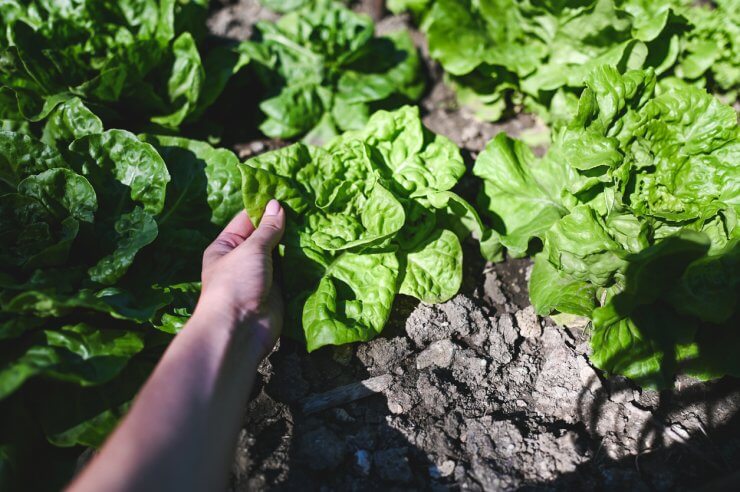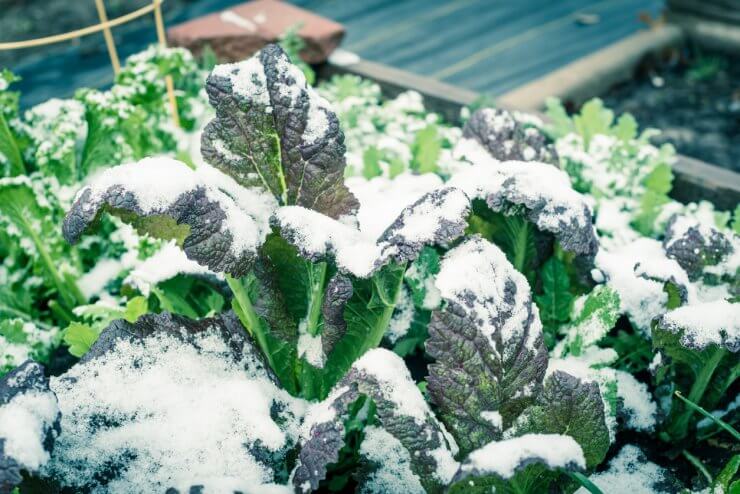
The first time I lost an entire crop of lettuce to an early frost, I was devastated. I remember that crisp autumn morning vividly. I had stepped out into my garden, steaming mug of coffee in hand, breathing in the sharp air that hinted at the coming winter. As I surveyed my plot, my eyes landed on my beloved lettuce patch. What I saw made my heart sink – those once-vibrant leaves were wilted and translucent, destined for the compost bin instead of my salad bowl.
That experience lit a fire in me. As a gardener, I couldn’t accept that my leafy greens were doomed to such a short growing season. There had to be a way to protect lettuce from frost and extend the harvest. And so began my quest to outsmart Jack Frost.
Over the years, I’ve worn many hats – master gardener, plant biology enthusiast, and determined experimentalist. I’ve had my share of successes and failures, but along the way, I’ve discovered some truly ingenious methods to keep those leafy greens thriving well past the first cold snap.
Today, I’m excited to share with you the knowledge I’ve gained through countless frosty mornings and chilly nights. Whether you’re a novice gardener determined to enjoy home-grown salads year-round, or a seasoned green thumb looking to push the boundaries of your growing season, you’ll find practical, science-backed tips to protect your lettuce from frost.
We’ll explore a range of strategies, from crafting your own DIY cold frames (trust me, it’s easier than you think!) to selecting frost-hardy varieties that laugh in the face of freezing temperatures. We’ll even venture into the fascinating world of indoor hydroponic gardening, perfect for those who want to grow lettuce when the outdoor world is blanketed in snow.
So, grab a cup of your favorite warm beverage, settle in, and let’s embark on this frosty adventure together. By the time you finish reading, you’ll be armed with the knowledge to transform your lettuce patch into a thriving winter wonderland. Who knows? You might even find yourself looking forward to those first frosty mornings, eager to put your new frost-fighting skills to the test! Below are 10 ways to protect your precious lettuce from frost this winter!
1. Understand Frost in Your Zone
Take a moment to understand why lettuce is so susceptible to cold damage. Lettuce, being a cool-season crop, actually prefers temperatures between 60°F and 65°F (15°C to 18°C). However, when temperatures drop below 32°F (0°C), the water inside the plant cells can freeze, causing irreparable damage to cell walls and ultimately leading to wilted, mushy leaves.
Interestingly, not all frost is created equal. A light frost (32°F to 29°F or 0°C to -1.7°C) might only damage outer leaves, while a hard frost (below 28°F or -2.2°C) can destroy entire plants. This is why knowing how to protect lettuce from frost is crucial for extending your growing season.

2. Build or Buy Cold Frames
One of the most effective ways to protect lettuce from frost is by using cold frames. These simple structures act like mini-greenhouses, trapping heat during the day and releasing it slowly at night to keep your lettuce warm.
To create a DIY cold frame, you’ll need:
- A wooden box (old windows work great for the top)
- Clear plastic or glass for the lid
- Hinges to attach the lid
Place your cold frame over your lettuce bed before the first frost hits. During sunny days, prop the lid open to prevent overheating. Close it as evening approaches to trap the day’s warmth. This method can extend your growing season by 4-8 weeks, depending on your climate!
Pro tip: For an extra layer of protection, line the inside of your cold frame with bubble wrap. This creates an additional insulating barrier that can help protect lettuce from frost even in the coldest nights.

3. Time the Harvest of Your Last Batch
Knowing when to harvest your last batch of lettuce is crucial in the quest to protect lettuce from frost. Generally, you’ll want to harvest your final crop about 2-3 weeks before your area’s average first frost date. However, this can vary depending on your USDA hardiness zone.
For those in USDA zones 3-5, where winters are harsh, aim to harvest by late September to early October. In zones 6-8, you might be able to push it to late October or even early November. Zones 9 and above? You lucky ducks might be able to grow lettuce year-round with minimal protection!
Remember, it’s better to harvest a bit early than risk losing your crop to an unexpected frost. If you’re unsure, keep an eye on weather forecasts and be ready to harvest at a moment’s notice.

4. Choose Frost-Hardy Varietals
Not all lettuce is created equal when it comes to cold tolerance. If you live in colder USDA zones and want to push the boundaries of your growing season, consider planting some of these frost-hardy varieties:
- ‘Winter Density’: This romaine-butterhead cross can withstand temperatures as low as 10°F (-12°C)!
- ‘Arctic King’: True to its name, this butterhead variety thrives in cold weather.
- ‘Merlot’: A stunning red leaf lettuce that’s both cold-hardy and packed with antioxidants.
- ‘Rouge d’Hiver’: This French heirloom romaine turns a beautiful bronze-red in cold weather.
These varietals are excellent choices if you’re looking to protect lettuce from frost naturally. Their genetic makeup allows them to withstand colder temperatures better than their more tender cousins.

5. Bring Lettuce Indoors By Growing Hydroponically
For those who simply can’t bear the thought of a winter without fresh lettuce, hydroponic indoor gardening might be the answer. I actually prefer to grow lettuce this way, I have a huge lettuce garden in the winter, and I use it much more! Going the hydroponoc route is a soilless growing method allows you to cultivate lettuce year-round, completely protected from frost and other outdoor elements.
To set up a basic hydroponic system for lettuce:
- Choose a sunny windowsill or invest in grow lights
- Select a hydroponic kit or create your own using a large container, air pump, and nutrient solution
- Plant lettuce seeds in rockwool cubes or another inert growing medium
- Monitor pH levels and nutrient concentration regularly
While it might seem complex at first, hydroponic gardening can be a fun and rewarding way to protect lettuce from frost and enjoy fresh greens all winter long. Plus, it’s a great conversation starter when guests wonder where you got such crisp lettuce in the middle of January! Here a video I did in the past talking about different hydroponic systems.
5 More Tips and Tricks to Protect Lettuce from Frost
- Row covers: These lightweight fabrics can be draped directly over plants, providing 2-8 degrees of frost protection.
- Water jugs as mini-greenhouses: Cut the bottom off plastic milk jugs and place them over individual lettuce plants. Remove during the day to prevent overheating.
- Mulching: A layer of straw or leaves around your lettuce plants can help insulate the soil and protect roots from freezing.
- Cloche it up: Individual glass or plastic cloches can be placed over plants for spot protection.
- The old bedsheet trick: In a pinch, draping old bedsheets or towels over your lettuce beds can provide enough protection to save them from a light frost.
Remember, the key to successfully protecting lettuce from frost is to be proactive. Keep an eye on weather forecasts and have your protection methods ready to deploy at a moment’s notice.
By employing these innovative techniques to protect lettuce from frost, you can extend your growing season and enjoy fresh, homegrown lettuce well into the colder months. Whether you’re building cold frames, experimenting with frost-hardy varietals, or diving into the world of hydroponics, there’s a method that will work for every gardener and climate.
So don’t let Jack Frost put an end to your leafy green dreams. With a little creativity and know-how, you can keep your salad bowl full and your gardening passion alive all year round!
Want to become a lettuce-growing guru? Check out our comprehensive Lettuce Gardening Guide for even more tips and tricks!
We’d love to hear about your experiences protecting lettuce from frost. Have you tried any of these methods? Do you have any unique tricks up your sleeve? Share your thoughts in the comments below!


 Previous
Previous

